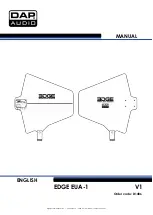
2-4
Cisco 1120 Connected Grid Router Hardware Installation Guide
OL-26438-02
Chapter 2 Installation Safety and Site Preparation
General Site Requirements
General Site Requirements
This section describes the requirements your site must meet for safe installation and operation of your
router. Ensure that the site is properly prepared before beginning installation. If you are experiencing
shutdowns or unusually high errors with your existing equipment, this section can also help you isolate
the cause of failures and prevent future problems.
Rack Mounting
The router is designed for mounting on a DIN rail, or a wall. Cisco recommends that the router not be
rack mounted. However, if you install the router in a rack, follow these guidelines:
•
Allow clearance around the rack for maintenance.
•
Allow at least one rack unit of vertical space between routers.
•
Enclosed racks must have adequate ventilation. Ensure that the rack is not congested, because each
router generates heat. An enclosed rack should have louvered sides and a fan to provide cooling air.
Heat generated by equipment near the bottom of the rack can be drawn upward into the intake ports
of the equipment above.
Router Environmental Requirements
The location of your router and the layout of the substation environment are important considerations
for proper router operation. Equipment placed too close together, inadequate ventilation, and
inaccessible panels can cause malfunctions and shutdowns, and can make maintenance difficult.
Install the router so that you can access both the module-side and the cable-side panels.
When planning your site layout and equipment locations, refer to
General Site Requirements, page 2-4
.
If you are currently experiencing shutdowns or an unusually high number of errors with your existing
equipment, these precautions and recommendations may help you isolate the cause of failure and prevent
future problems.
•
Ensure that the room where your router operates has adequate air circulation. Electrical equipment
generates heat. Without adequate air circulation, ambient air temperature may not cool equipment
to acceptable operating temperatures.
•
Always follow ESD-prevention procedures described in
Preventing Electrostatic Discharge
Damage, page 2-3
, to avoid damage to equipment. Damage from static discharge can cause
immediate or intermittent equipment failure.
•
Ensure that the chassis cover and module cable side panels are secure. All empty module slots and
power supply bays must have filler panels installed.
•
When equipment installed in a rack (particularly in an enclosed rack) fails, try operating the
equipment by itself, if possible. Power off other equipment in the rack (and in adjacent racks) to
allow the router under test a maximum of cooling air and clean power.
Power Guidelines and Requirements
Check the power at your site to ensure that you are receiving “clean” power (free of spikes and noise).
Install a power conditioner if necessary.















































